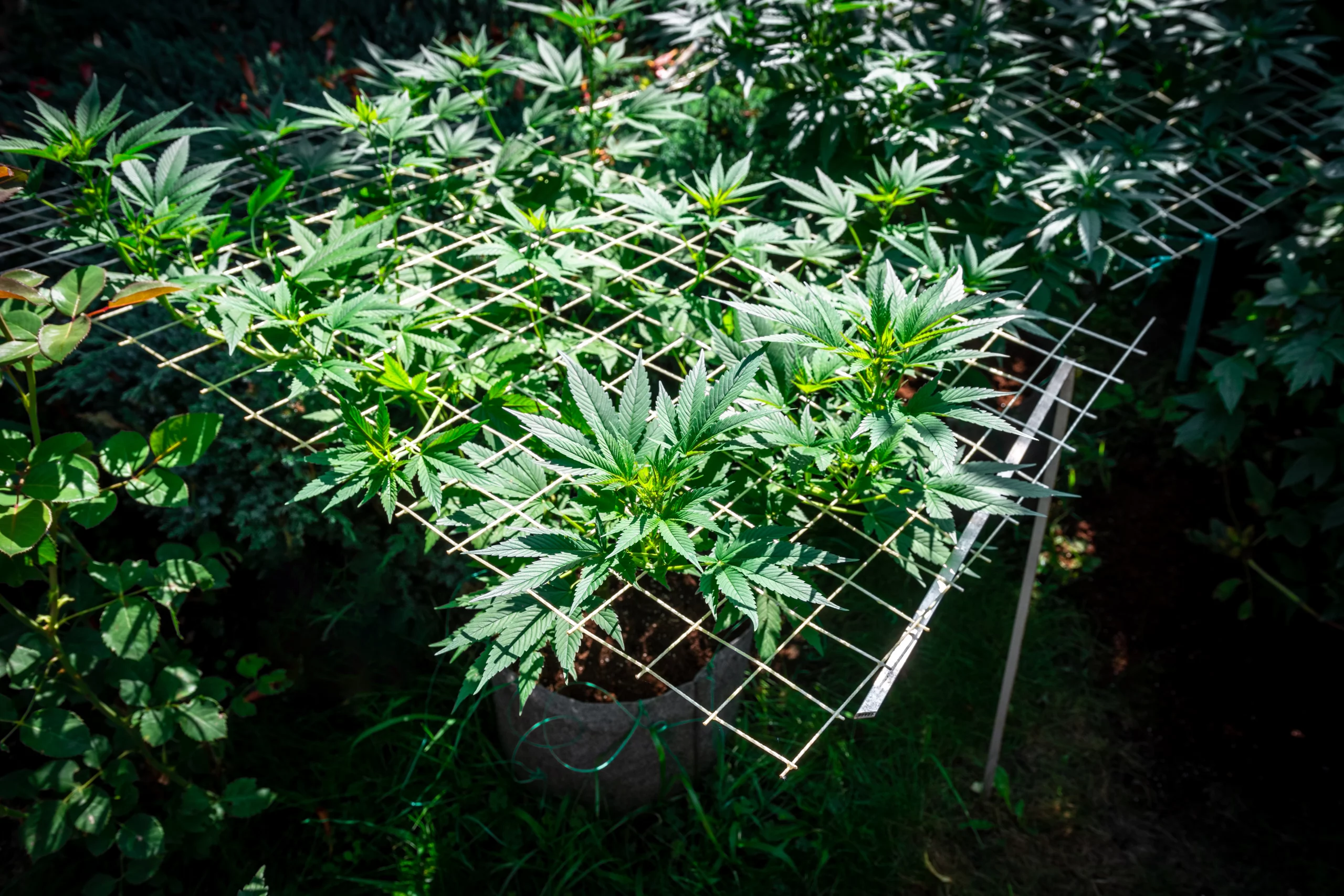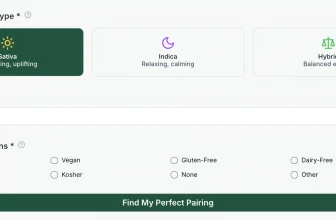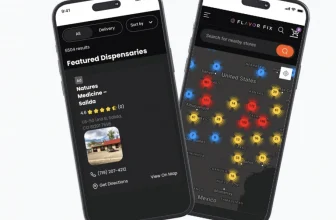
What is scrogging? No, to scrog is not a cleaning technique for your car. It’s one of the techniques for how to grow weed.
Scrogging is about training your marijuana plants during the various growing stages of weed to create a perfectly horizontal canopy and eye-popping harvests. Any veteran grower knows how to scrog and when to employ the method – and for a good reason.
What is Scrogging?
Home is where the grow is for so many Americans since legalization. According to New Frontier Data, 6% of Americans now grow their flower. And whether you choose to grow inside or outside, it’s an opportunity to control the quality of your herb.
Scrogging, or “screen of green,” is a training technique designed for indoor cannabis growers to maximize their light usage and the number of high-quality buds they produce. Without scrogging, you’ll get a single plant with a central cola or bud.
But with scrogging, every branch can produce more colas, which takes your yield from a single cola per plant to up to five. In other words, scroggers can increase their yields by up to 500%.
Sound good? Here’s how to do it.
How to Scrog Marijuana Plants
With an incredible screen of green yield per plant, you probably want to know how to implement scrogging yourself. Thankfully, it’s pretty easy to do.
Scrogging is done with a net, which resembles a metal grid. Place it 15 inches above your indoor weed plants. Once your cannabis branches grow through the net, you can train them to grow outwards instead of upwards by bending the stalks and tying them to your net.
Of course, there’s more to your marijuana grow kit than this. Most cultivators use topping to cut off the tops of some of the stalks that have made their way through the net to encourage them to grow out, not up.
Every time you use the screen of green technique with topping, you’re helping your plants grow more branches, making them bushier. This is where your grow light height comes to the fore. Scrogging helps expose every inch of your plant to the light regardless of your chosen height.
Factors to Consider When Scrogging Marijuana Plants
Scrogging together with topping is the best way to get branches of a similar length and to allow as much light exposure as possible.
So, what are the marijuana scrogging keys to success?
· Height – Place your net 11-12 inches above your plants (measuring from the base).
· Size – Keep the same strains together for simplicity. With multiple strains, group them based on their average height.
· Spacing – Spacing is critical. The branches of one plant should slightly interlock with its neighbor. This is one to two feet between pots if you want precise measurements.
Tips for Successful Scrogging
· Begin at a corner of your net and work around the edges before moving inside.
· Gauge spacing by stretching out the longest branch of your plant to the adjacent plant. There should be at least a six-inch overlap with the adjacent plant.
· Work methodically as you tie your plants to the net.
· Try rotating your plants to open up new possibilities if something isn’t working.
The Screen of Green: Pros and Cons
According to the latest stats, legal cannabis sales are expected to reach $100 billion by 2030. Today, the screen of green tactic is one of the indoor grow methods that can help cultivators make the most of their space.
So, is this the best way to germinate cannabis seeds and tip your weed scale come harvest time?
Pros of the Scrog
· It’s ideal for beginners.
· Scrogging can be done with cuttings and buying cannabis seeds that have been feminized.
· Get more bud sites from your plants.
· Low maintenance growing.
· Particularly well-suited for any Sativa weed strain.
Cons of the Scrog
· Takes longer than other options.
· You’ll need some know-how to rig up your netting.
· It doesn’t work as well when growing different types of weed simultaneously.
Sea of Green vs. Screen of Green
Do you want to sog or scrog? Sea of green and screen of green are not interchangeable terms.
Whereas scrogging focuses on multiple bud sites, sogging does the exact opposite. It aims to create one big juicy cola. This technique is helpful if you have extremely limited space or prioritize maximum speed.
Note that sogging can only be done with clones and usually has at least 40 per square meter.
After a week or two, they switch to flowering mode, but clones are different because they tend to go into overdrive, giving you a thick stem and branches in a fraction of the time of other growing techniques.
It also only works with cannabis strains that reach toward the light and then stop to produce a massive kola. Indica strains are superior in this case because they tend to hit 30 cm tall and then stop.
So, why can’t you use anything but clones?
In short, nobody knows, but some theories suggest that the clones overcompensate because they aren’t young and sogging conditions replicate the fading light of autumn. On the other hand, some say it’s just a variation of stretching.
Some of the advantages of sogging over scrogging include:
· Rapid turnaround.
· Works better in constrained spaces.
· Gives you an incredible Indica harvest.
However, you’re naturally limited to clones, and sogging is relatively high maintenance. Most growers also find that sogging requires far stronger lights to extract the maximum possible harvest, which can drive up your costs.
Scrogging isn’t better than sogging, and vice-versa. On the contrary, they’re both excellent choices for growing your next quarter of weed.
Best Strains for Screen of Green
Whenever you buy cannabis seeds, it’s essential to consider their unique characteristics. Generally, the best candidates for the it are those with flexible branches and a tendency to reach toward the sky.
Moreover, candidate strains can include those with a vigorous growing habit. So, here are some ideas for trying this technique for yourself:
· Cherry AK
· Critical Purple Kush
· Fruity Pebbles
Conclusion
Scrogging is an excellent way of extracting yields of up to 500% more from your plants. It’s relatively easy to master for beginners, even if it does require some setting up.
If you’re interested in joining the $20.47 billion global cannabis market, we’ve got many guides and tips for marijuana enthusiasts. Discover your next flavor with Flavor Fix now.






